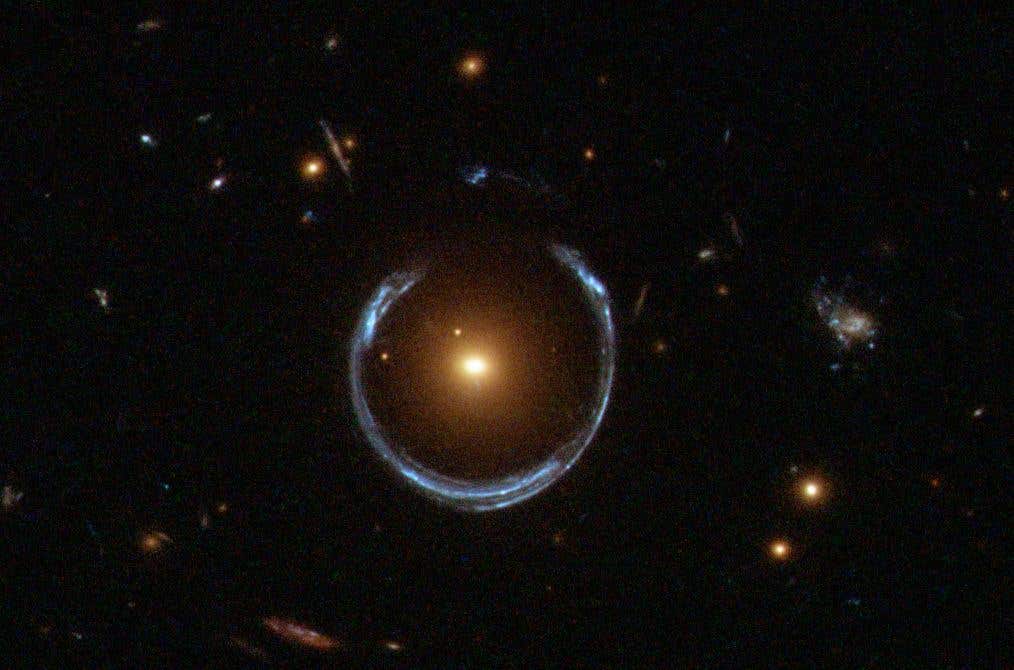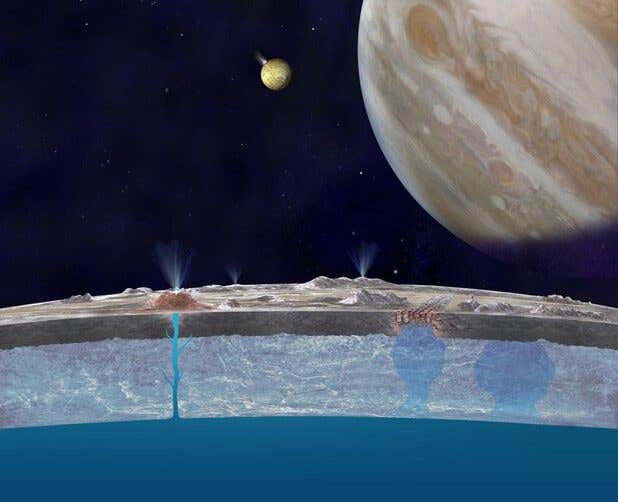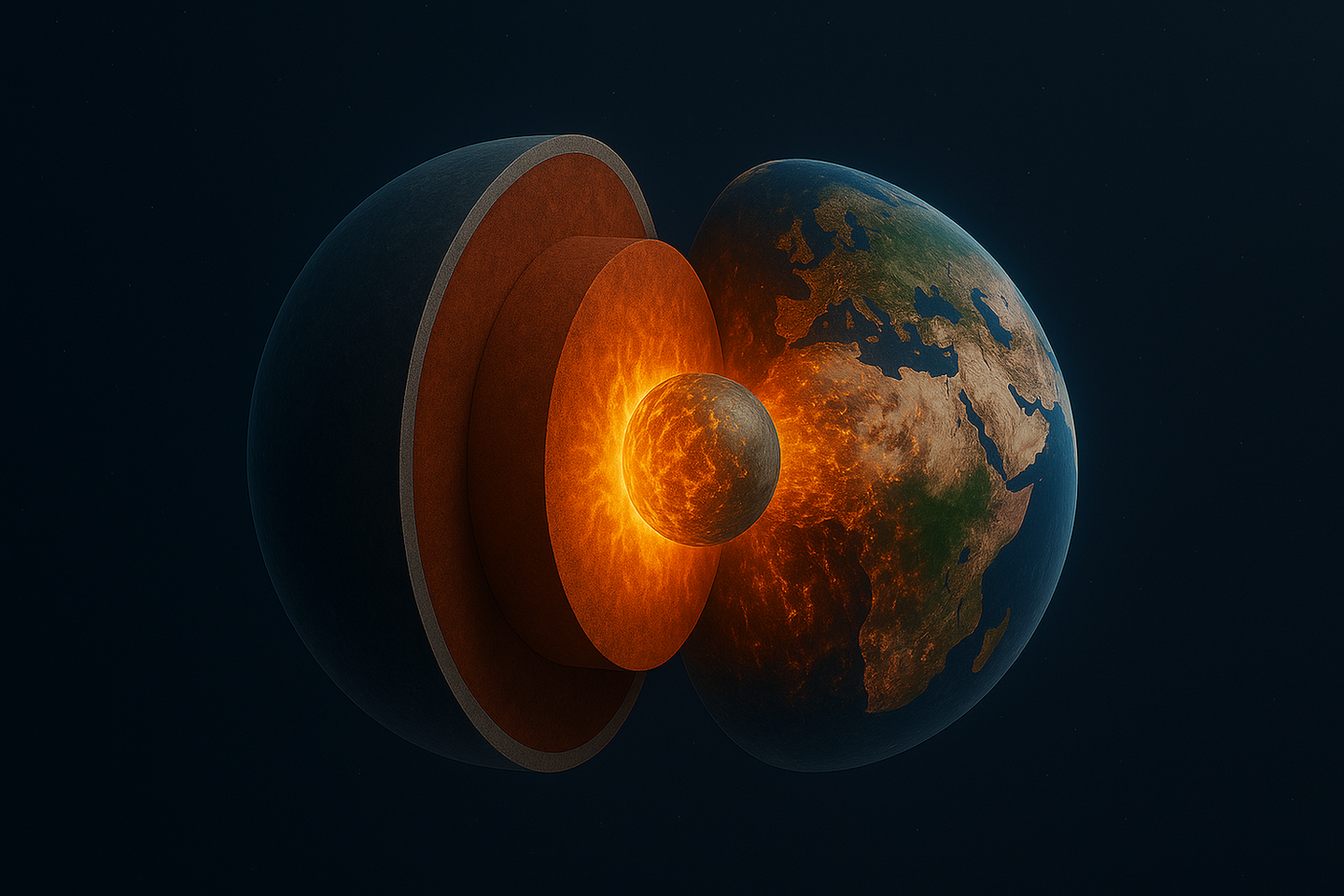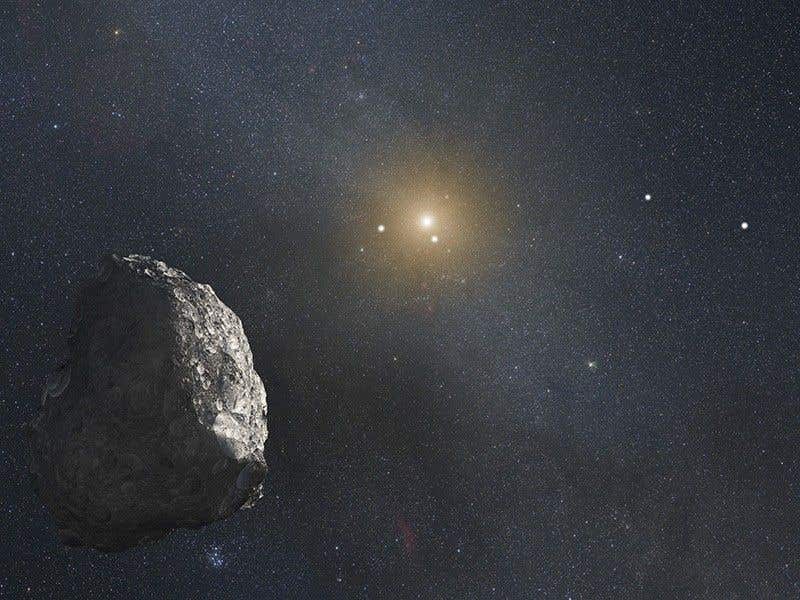Astronomers detect the largest black hole ever observed – Mass equal to 36 billion suns
Astronomers confirm a 36-billion-solar-mass Cosmic Horseshoe ultramassive black hole using lensing and stellar dynamics.

In a landmark result, astronomers used gravitational lensing and stellar dynamics to weigh a dormant black hole in the Cosmic Horseshoe at 36 billion solar masses. (CREDIT: NASA/ESA / CC BY-SA 4.0)
Astronomers have reported a colossal find in a famous warped ring of light. Inside the galaxy that forms the Cosmic Horseshoe, researchers measured a black hole weighing 36 billion suns. The inner stars reach speeds near 400 kilometers per second. The result pushes near the upper bound of what theory allows and offers a new way to weigh quiet giants across deep space.
The team combined two powerful tools. They modeled how the Horseshoe bends light from a background galaxy, and they mapped how stars race around the core. Together, the signals point to a single conclusion: only an ultramassive black hole can explain the observed gravity.
“This is amongst the top 10 most massive black holes ever discovered, and quite possibly the most massive,” said Professor Thomas Collett of the University of Portsmouth. “Most of the other black hole mass measurements are indirect and have quite large uncertainties, so we really don't know for sure which is biggest. However, we’ve got much more certainty about the mass of this black hole thanks to our new method.”
A record-scale mass in a fossil group
The lensing galaxy sits about 5 billion light-years away. It’s one of the heaviest known, and it dominates its surroundings. Astronomers call such a system a fossil group. Over time, it likely merged with and absorbed bright neighbors. Those mergers would have driven their central black holes to the middle, where they fused into one giant.
“It is likely that all of the supermassive black holes that were originally in the companion galaxies have also now merged to form the ultramassive black hole that we have detected,” Collett said. “So we're seeing the end state of galaxy formation and the end state of black hole formation.”
The Cosmic Horseshoe is also a textbook case of strong gravitational lensing. Its mass bends spacetime so much that light from a more distant galaxy wraps into a near-complete ring. That geometry, first predicted by Albert Einstein, turns the galaxy into a natural telescope. It also adds a precise ruler for weighing the core. When paired with the racing speeds of inner stars, the lensing data tighten the mass estimate.
Related Stories
- Space travel to a nearby black hole could happen in the next 100 years
- Our universe may exist inside a spinning black hole, JWST finds
Method reveals silent giants
The newly reported black hole appears dormant. No bright disk of infalling gas glows around it. That quiet state hides most distant black holes from standard mass methods, which rely on emissions from active feeding.
Lead researcher Carlos Melo, a PhD candidate at the Universidade Federal do Rio Grande do Sul in Brazil, explained the advantage. “This discovery was made for a ‘dormant’ black hole – one that isn’t actively accreting material at the time of observation. Its detection relied purely on its immense gravitational pull and the effect it has on its surroundings. What is particularly exciting is that this method allows us to detect and measure the mass of these hidden ultramassive black holes across the universe, even when they are completely silent.”
The team’s approach combines strong lensing with stellar dynamics measured across two dimensions. Integral-field spectroscopy maps the motion of many stars at once, rather than along a single slit. That detail matters at this distance because the region influenced by a central black hole is tiny on the sky. Lensing adds extra leverage. It forces the mass model to match both the arcs of the lensed background light and the inner spin of stars. That dual fit reduces the chance of a misleading result.
How big can black holes grow?
The measured mass, about 3.6 × 10^10 suns, brushes against long-standing theoretical limits. Simulations suggest growth slows as radiation pressure fights inflow and as galaxy gas gets heated and expelled. Yet nature keeps finding ways to feed central objects in the largest halos. Long chains of galaxy mergers may pile up mass faster than feedback can stop it. A fossil group, by definition, marks the endpoint of a crowded history.
The discovery also highlights an open question in galaxy evolution. Astronomers see tight links between black hole mass and host properties, like the speed of bulge stars. That relation, known as the M–sigma relation, holds across many galaxy types and a wide range of masses. But the heaviest cores, including this one, may bend or break the trend. If the biggest black holes lie above the usual relation, then the path to their growth looks different from the path taken by more common systems.
Ultramassive black hole and the galaxy–quasar link
Researchers want to know how a central engine regulates the life of its galaxy. As matter falls inward, some of it shines fiercely as a quasar. Outflows from that bright core heat and stir the gas that would otherwise cool and form stars. The net effect can quench star formation.
Collett summarized the cycle: “We think the size of both is intimately linked, because when galaxies grow they can funnel matter down onto the central black hole. Some of this matter grows the black hole but lots of it shines away in an incredibly bright source called a quasar. These quasars dump huge amounts of energy into their host galaxies, which stops gas clouds condensing into new stars.”
Our own Milky Way holds a black hole of about four million solar masses. It is quiet today. That could change in the distant future. The Milky Way and the Andromeda Galaxy are on a slow collision course. When they merge, flows of gas may surge toward the center and trigger a quasar phase. While that event lies billions of years ahead, the Cosmic Horseshoe could be a preview of the end state after such a merger cascade.
Past studies and findings
The most convincing prior masses near this scale come from nearby giants like Holm 15A, a central galaxy in the Abell 85 cluster. In 2019, high-resolution stellar dynamics suggested a mass near 40 billion suns. That work remains influential, yet it also shows the limits of single-technique models. In very large cores, orbits can be complex. Uncertainties in light profiles, anisotropies, and dark matter all shape the answer.
The Cosmic Horseshoe result stands out because it does not depend on active accretion and it cross-checks two independent observables. It shares logic with a lensing-based mass for a dormant black hole in Abell 1201. That study in 2023, used distortions in a rare central image to bracket the mass. Together, these targets point to a path forward. Large lensing surveys can find many more systems with the right geometry. Modern instruments can then map star motions inside the same galaxies. The pairing should yield a clean census of black hole growth over cosmic time.
Ultramassive black hole could guide future surveys
The team expects major gains from the Euclid space telescope and other wide-field missions. Those surveys will deliver sharp images of many Einstein rings. With follow-up spectroscopy from ground-based observatories, astronomers can repeat the Horseshoe playbook on a grand scale. The goal is simple: measure enough masses across enough epochs to see how the M–sigma relation evolves, or breaks, with time and environment.
The method also offers clear benefits for dormant systems. Traditional tools such as reverberation mapping and active galactic nucleus spectral fitting require bright accretion light. Those methods work best for black holes that feed, flash, and vary. The Horseshoe method works when the lights are off.
“Typically, for such remote systems, black hole mass measurements are only possible when the black hole is active,” Melo said. “But those accretion-based estimates often come with significant uncertainties. Our approach, combining strong lensing with stellar dynamics, offers a more direct and robust measurement, even for these distant systems.”
The next decade
Expect a shift from one-off records to population studies. With Euclid, the Nancy Grace Roman Space Telescope, and deep surveys from the ground, the number of strong lenses will jump. Software now automates much of the lens modeling. High-throughput spectrographs will map the necessary stellar motions. That pipeline could produce thousands of black hole masses, not dozens.
If those data show that the heaviest objects consistently rise above the classic M–sigma line, theories will have to explain a two-track growth path. Dense environments, merger rates, and feedback strength will all play a part. The Horseshoe result, anchored by both lensing and kinematics, sets the bar for the accuracy needed in that next phase.
The discovery also sharpens a core goal of galaxy science. Researchers want to build a single timeline that links dark matter halos, stellar growth, and black hole feeding. The Horseshoe system checks many boxes. It is massive, old in structure, and quiet at the center. Its geometry reveals mass with rare clarity. Its stars keep the dynamical record of how the core evolved. In that sense, the target is a benchmark for co-evolution models.
About 5 billion light-years from Earth, gravity has written a clean result on the sky. A bright ring marks the warped path of light. A steep rise in stellar speed marks the pull of a dark heart. Together, they point to a single answer: an ultramassive black hole near the theoretical ceiling for black hole growth.
Practical implications of the research
The combined lensing-plus-kinematics method opens a new window on dormant black holes across cosmic time. Surveys can now build large, clean samples of masses without waiting for flares. That shift will reduce bias toward active systems and improve tests of how black holes and galaxies co-evolve.
Better mass counts at the high end will refine limits on feedback in galaxy formation models. If ultramassive black holes are common in fossil groups, then energy released during growth must be folded into simulations of how stars stop forming in the most massive galaxies. That insight can guide predictions of the chemical history of the universe, because quenching changes when and where elements are forged.
There are technological gains as well. Lensing models and integral-field spectrographs are already mainstays of observatories. The Horseshoe result shows how to combine them for maximum impact. As Euclid and future telescopes deliver deep, wide images, the same technique can scale. The payoff is a map of black hole growth that reaches back billions of years.
Note: The article above provided above by The Brighter Side of News.
Like these kind of feel good stories? Get The Brighter Side of News' newsletter.



